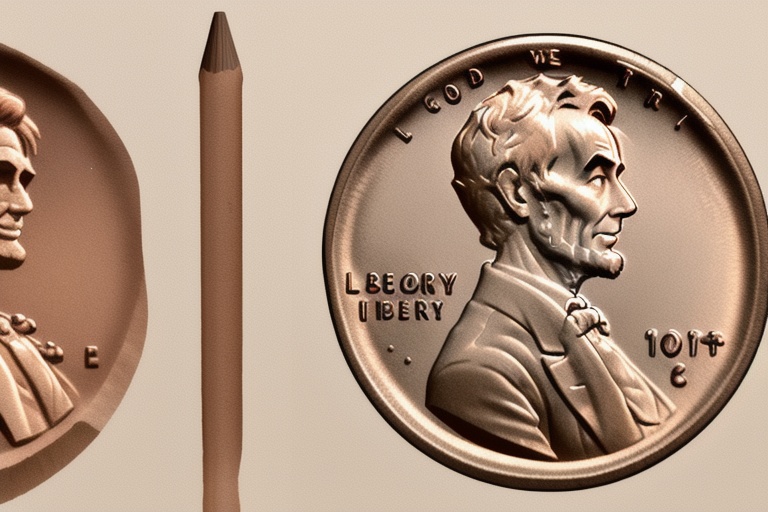The New Zealand one-cent coin, fondly remembered as the penny, is a remarkable component of the nation's numismatic chronicle. First issued in 1967 and produced until 1987, it served as the New Zealand dollar's smallest unit until its demonetization in 1990. Boasting an iconic reverse image of a fern leaf—a potent symbol of New Zealand identity—the one-cent coin encapsulates a lasting legacy deeply embedded in the nation's heritage. This exploration presents a detailed analysis of the one-cent coin's historical background, artistic significance, valuation, and esteemed position within the coin collecting community. Let us embark on an insightful expedition into the eminently collectible world of this New Zealand monetary specimen.
The New Zealand one-cent coin, fondly remembered as the penny, is a remarkable component of the nation's numismatic chronicle. First issued in 1967 and produced until 1987, it served as the New Zealand dollar's smallest unit until its demonetization in 1990. Boasting an iconic reverse image of a fern leaf—a potent symbol of New Zealand identity—the one-cent coin encapsulates a lasting legacy deeply embedded in the nation's heritage. This exploration presents a detailed analysis of the one-cent coin's historical background, artistic significance, valuation, and esteemed position within the coin collecting community. Let us embark on an insightful expedition into the eminently collectible world of this New Zealand monetary specimen.
The Coin's Overview and Design Features
Spanning a diameter of 17.53 millimeters and weighing a mere 2.07 grams, the New Zealand one-cent piece claims the title of the most diminutive and lightest denomination ever to circulate in the country's monetary system. The coin gains its uniqueness from the characteristic reverse design—the fern leaf. Renowned New Zealand artist Reginald George James Berry was the mastermind behind this inspired numismatic motif, which graced the reverse side of each denomination unveiled alongside the one-cent coin during its inaugural year.
New Zealand's transition from the pre-decimal New Zealand pound to the decimal New Zealand dollar on the 10th of July, 1967, marked the emergence of the one-cent coin, crafted to mirror the pre-existing penny's value. Although under the old system, the penny comprised 1/240 of a pound, the introduction of the one-cent piece ensured a seamless monetary exchange for New Zealand's populace.
The obverse side of the coin was initially graced by a portrait of Queen Elizabeth II, a work of Arnold Machin. This image remained until 1985, when it made way for a new rendition by Raphael Maklouf—a design concurrently introduced into pound sterling coins—offering a rejuvenated visage for the latter years of the one-cent piece's circulation.
The Coin's Economical and Production Journey
By 1988, the inescapable sway of inflation had rendered the minting of both the one and two-cent coins fiscally impracticable, as the cost of production eclipsed their monetary worth. Despite their withdrawal from circulation, these coins maintained their legal tender status until the 30th of April, 1990.
Throughout its production life, the New Zealand one-cent coin experienced varying minting quantities. Noteworthy is the absence of new one-cent coins in both 1968 and 1969, a consequence of the substantial supply minted in 1967, and similarly no minting occurred in 1977. Collectors were not left wanting, however, as mint sets were made available during these intermissions. Cumulatively, over 553 million one-cent coins, encompassing proofs and items within mint sets, were produced.
Numismatic Value and Collector Interest
Now a relic of the past, the New Zealand one-cent coin possesses both historical significance and numismatic allure. Its distinct design coupled with its finite existence propels this coin to the forefront of collectible items within the numismatic sphere. The coin is not only a fragment of New Zealand's monetary history but also a testament to the nation's cultural and sporting splendor, thus enchanting collectors and patriots alike.
Serving as a tangible memento of the nation's fiscal progression, the New Zealand one-cent coin, with its petite stature and featherlight nature, remains an engrossing subject among numismatists, piquing the interests of both veteran enthusiasts and novices to the hobby.
Continuing the Journey Through Coin Collecting
As we advance in our numismatic voyage, we shall turn our gaze to other coins belonging to the New Zealand dollar lineage and investigate their prominence in the world of coinage. The forthcoming discussion promises an engaging narrative that will unravel the intricacies of coin collecting and valuation. Prepare for a captivating continuation of our in-depth exploration into the wondrous universe of currency.
The New Zealand one-cent coin stands as a poignant token of the nation's journey through monetary reform. Circulating from 1967 to 1987, it bore witness to the historic shift from the pound to dollar system and has since transcended its original utility, becoming a cherished relic rich with numismatic and cultural significance. Eclipsing its humble beginnings as a mere unit of commerce, the one-cent coin now represents an enduring snapshot of New Zealand's heritage, inviting coin collectors and historians alike to appreciate its distinct charm. As anticipation builds for our subsequent delve into other fascinating New Zealand denominations, we remain steadfast in our commitment to sharing the thrilling tales embedded within these cherished pieces of New Zealand’s currency story.
Information for this article was gathered from the following source.

